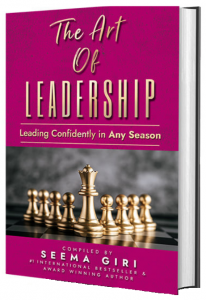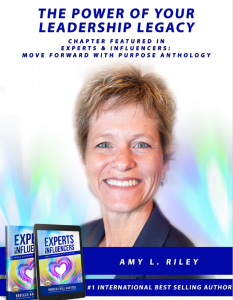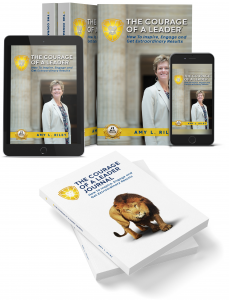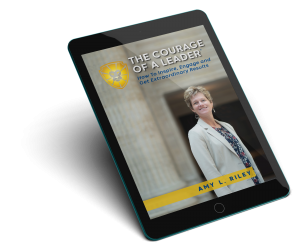Our guest today is Therese Longo, an expert in Human Performance Technology (HPT), who has dedicated her career to enhancing how organizations develop their people. Therese’s approach shifts the focus from traditional competency and behavior-based models to accomplishment-focused strategies that drive real results. She realized that while training is often seen as the go-to solution for performance issues, it doesn’t always address the root of the problem. Her journey into HPT began when she connected with mentors and industry leaders, leading her to adopt innovative techniques that emphasize measurable outcomes and sustainable growth.
In our conversation, we explore how accomplishment-focused methods can transform performance management systems and talent development processes. Therese emphasizes the importance of understanding the full scope of human performance rather than just relying on training. By leveraging HPT principles, she guides us on how to identify what truly drives success in our teams and organizations.
This episode is a deep dive into rethinking performance management, offering practical insights on how we can shift from generic training to strategies that foster meaningful accomplishments and lasting impact.
Key Takeaways:
1. Accomplishment-Focused Approach: Shifting focus from traditional competency models to accomplishment-driven strategies can lead to better performance outcomes.
2. Training Isn’t Always the Solution: While training can help, it often doesn’t address the full scope of performance issues; understanding the root causes is crucial.
3. Human Performance Technology (HPT): HPT provides a framework to analyze and improve human performance by focusing on measurable accomplishments.
4. Identifying Performance Gaps: Therese emphasizes the importance of pinpointing specific areas that impact performance rather than applying generic training solutions.
5. Sustainable Growth: By leveraging HPT principles, organizations can create more effective, long-term improvements in their talent development and management processes.
Resources Mentioned:
- Dr Carl Binder’s performance thinking networks – https://www.sixboxes.com/
- Human Competence, book by Tom Gilbert – https://www.amazon.com/s?k=human+competence+thomas+gilbert&hvadid=580634968296&hvdev=c&hvlocphy=9198637&hvnetw=g&hvqmt=e&hvrand=3887849253128253945&hvtargid=kwd-411443381008&hydadcr=22592_13493326&tag=googhydr-20&ref=pd_sl_6z1t5nwdh5_e
- For a Performance Profile template, reach out to Therese at tlongo@radcomservices.com
The Inspire Your Team to Greatness Assessment (the Courage Assessment)
How can you inspire our team to be more proactive, take ownership and get more done?
You demonstrate and empower The Courage of a Leader. In my nearly 3 decades of work with leaders, I’ve discovered the 11 things that leaders do – even very well-intentioned leaders do – that kill productivity.
In less than 10 minutes, find out where you’re empowering and inadvertently kills productivity, and get a custom report that will tell you step by step what you need to have your team get more done.
https://courageofaleader.com/inspireyourteam/
About the Guest:
Therese Longo is a learning and development professional with a passion for driving performance culture to increase job satisfaction and elevate business results. As the Vice President of Operations for Radcom, Therese draws upon her background as a Certified Performance Thinking® Practitioner and her 20 years of experience as an instructional design professional to drive continuous improvement within Radcom. She leads the development of Radcom’s project teams, helping team members find effective, efficient means of producing impactful customized documentation, training, and additional support that help clients enhance their professional abilities. Therese applies her performance improvement expertise with clients, managing various projects, through which she helps business executives achieve organizational goals through the performance of their people.
LinkedIn: https://www.linkedin.com/in/thereselongo/
Email: tlongo@radcomservices.com
About the Host:
Amy L. Riley is an internationally renowned speaker, author and consultant. She has over 2 decades of experience developing leaders at all levels. Her clients include Cisco Systems, Deloitte and Barclays.
As a trusted leadership coach and consultant, Amy has worked with hundreds of leaders one-on-one, and thousands more as part of a group, to fully step into their leadership, create amazing teams and achieve extraordinary results.
Amy’s most popular keynote speeches are:
- The Courage of a Leader: The Power of a Leadership Legacy
- The Courage of a Leader: Create a Competitive Advantage with Sustainable, Results-Producing Cross-System Collaboration
- The Courage of a Leader: Accelerate Trust with Your Team, Customers and Community
- The Courage of a Leader: How to Build a Happy and Successful Hybrid Team
Her new book is a #1 international best-seller and is entitled, The Courage of a Leader: How to Inspire, Engage and Get Extraordinary Results.
http://www.courageofaleader.com
https://www.linkedin.com/in/amyshoopriley
Thanks for listening!
Thanks so much for listening to The Courage of a Leader podcast! If you got inspired and/or got valuable leadership techniques you can use from this episode and think that others could benefit from listening, please share using the social media buttons on this page.
Do you have questions or feedback about this episode? Leave a comment in the section below!
Subscribe to the podcast
If you would like to get automatic updates of new The Courage of a Leader podcast episodes, you can subscribe to the podcast on Apple Podcasts. You can also subscribe in your favorite podcast app.
Leave us an Apple Podcasts review
Ratings and reviews from our listeners are extremely valuable to us and greatly appreciated. They help our podcast rank higher on Apple Podcasts, which helps us ignite The Courage of a Leader in more leaders! Please take a minute and leave an honest review on Apple Podcasts.
Teaser for next episode
In our next episode Daphna Horowitz introduces her ABC leadership model—Awareness, Bold moves, and Communication—showing how these elements help leaders navigate uncertainty, make courageous decisions, and foster continuous growth.
Transcript
We want our team members and colleagues to be accomplishment focused, don't we, because good performance means accomplishing certain outcomes. Yet the job descriptions and the performance processes that we work with are often describing and measuring and having us talk about behaviors, skills and tasks. Therese Longo is my guest today, and she's a certified performance thinking practitioner, and she tells us how to define roles, set expectations and manage performance with an accomplishment focused approach. This makes so much sense. I think it'll make great sense to you, and you don't need extensive training to begin to think, operate and lead in a clearer and more effective way. Therese tells us how I'm glad you're here to listen in
Amy Riley:Welcome to the courage of a Leader podcast. This is where you hear real life stories of top leaders achieving extraordinary results, and you get practical advice and techniques you can immediately apply for your own success. This is where you will get inspired and take bold, courageous action. I'm so glad you can join us. I'm your host. Amy Riley, now are you ready to step into the full power of your leadership and achieve the results you care about most? Let's ignite the Courage of a Leader.
Amy Riley:Thank you Therese for being on the Courage of a Leader podcast today.
Therese Longo:Thank you, Amy. I'm glad to be here.
Amy Riley:Yeah, I always enjoy connecting with you. So a lot of companies, a lot of leaders, focus on competency development and behaviors for their performance management systems, their talent development systems and other processes. You and your firm advocate and leverage accomplishment focused approach. Let's start with, How did you arrive at this approach?
Therese Longo:Well, it really started when I realized that many of our organizations that come to us for help assume that training is the solution to their problem, okay, and and many times that is true, but what I was noticing was that many of the times we weren't getting the outcomes that we were hoping for, it wasn't solving the entire problem. And so it started to lead me down a learning path, and I found what's called human performance technology, or HPT for short, and it's all about human performance. When I discovered this, I connected with a bunch of mentors and teachers, and I jumped right in. And I met Carl Binder and took his program with the performance thinking network. Okay, through his program, he has accomplishment based models, two models in particular, the performance chain and the six boxes that really resonated. And why it resonated was because although skills and knowledge or training is box for there are all these other areas that contribute to performance. And what we typically do is we, and when I say we, I mean organizations, we see a problem, and we think they need to be trained that they don't know how to they don't know don't have the skills. Yeah, and what we're finding is that the research shows that it's not typically the skills and knowledge, there are other things at play, yes, and so after studying with him and applying his models to the work that we do at radcom with our clients, I really learned how to leverage those in many different ways, and also came up with My own tool that we call the performance profile.
Amy Riley:Yes, I love it, and I've seen the performance profile and its power in having some one's job activities described by the accomplishment, by the outcome, here's what we are trying to achieve, exactly. And I think that this is, yeah, this is really brilliant. There's some follow up questions I want to ask you Therese, but let's talk a little bit about what are the benefits. Why is this important? Because. It does take some lift, right? It does take some lift. You know, it's kind of easy to say, Yeah, this person does this. They run these monthly reports. They do this. They do that. Now, how do we take those job descriptions and turn them into this performance profile where we know we have a clear definition of success we're going for these outcomes. How do those performance profiles get used? What's the benefit?
Therese Longo:So I think the there's several benefits, really. The first thing is that it provides better clarity about what they're doing on the job, because we write job descriptions and they talk about a lot of responsibilities or maybe competencies, but many times they're vague, and they don't always get a really clear definition of what am I really going to be doing in this job?
Amy Riley:Theresa, can I stop you on that one? Because that sounds so simple, like, Oh, great. We'll have clarity, and I think people might miss how powerful that really is. I have leaders talking to me all the time about how they wish their team members were more proactive, more productive, right? It seems like they're just like, checking the boxes. They're just doing the things, or they're checking with me about what to do, and if I tell them to do ABC, they go and do ABC. But I really want them to do whatever it takes to achieve this outcome. So if we have those outcomes defined for them right then, then they have that ownership of doing what it takes, like figuring it out, what's the best way to get there,
Therese Longo:right? And one of the things that I think is important in what you're saying is that leaders aren't always setting the expectations. Analyze performance box. One is expectations and feedback. Hence, one we can use the performance profile as a way to set expectations, because it does provide so much information that normal managers and leaders aren't even necessarily thinking about on a day to day basis. But if they have this tool where here's the output of what we're expecting and here are all the things that it takes to do that, then they're already a step ahead, because setting expectations and providing feedback are the easiest way to solve performance problems. Yet we always go to training as the first solution, and like that is also the at least a lesser expensive Yes, and then training can be as well. So setting expectations is really important first level for performance improvement,
Amy Riley:yes, yes. So we were talking about the benefits Therese, before I interjected there and you said a key benefit is clarity. Other benefits, how else do your clients use the performance profile?
Therese Longo:So another great benefit is that it's more meaningful. We touched on that a little bit. There's a great book called Human Competence by Tom Gilbert, and he is sort of the father of HPT, and so he always says that behavior is costly, accomplished, valuable. Think about it this way, a person be working all day, doing, doing, doing lots of things, but at the end of the day, if they don't produce anything of value for the organization you've wasted money, yes. And so by starting with the accomplishments, we're already setting up people up for better success in providing the valuable things that organizations need in their business. Yeah,
Amy Riley:yeah. I couldn't agree more. Therese, I think it is really easy this day and age to all of a sudden have a day go by a week, go by a month, go by and we're responding to all our different inboxes, our Slack, our teams, our email, other messages that we get, and we're turning out a lot of energy and behavior, but are we getting the real work done,
Therese Longo:right? So think about a salesperson. They could be calling people all day long, but if they never set a net the next meeting, are they really publishing what you need them too. Great.
Amy Riley:I jumped in there. Therese. Were there more benefits that you wanted to share? I would
Therese Longo:say one, one other that I would share is that it makes it more measurable and easier to write. I think that's an important one. When we define outputs, we define them as nouns. And so there, there's something that. Can be counted. And not only do we do that, we also determine what are the standards or the criteria for good How do we know we have a good one when we've produced and so when we define those things, we already built in easy ways to measure even things that seem a little bit more intangible, more intangible,
Amy Riley:that's terrific. People are also often telling me that they want more feedback. They want to know how they're doing. When your job is described in terms of accomplishments, outcomes, and those are measurable, then you know whether you are meeting or exceeding the standards of performance or not. That's really terrific. Therese, can you give us an example of an accomplishment based outcome
Therese Longo:for a particular job? Or, yeah,
Amy Riley:just because you know you said that they're they're written in terms of nouns, just to give someone a flavor for like, Okay, if I wanted to take a job description for one of my team members and start to shift this into clear outcomes, what does that even look like?
Therese Longo:Right? Well, let me then explain a little bit about the process and how we do so typically we'll start with a job description, because typically it'll list the tasks that someone has to do, yeah, through interviewing people about their jobs, which is another important thing, because I think sometimes what leaders realize is that people aren't necessarily doing what you think they're doing. Yeah, it does allow for alignment. Does the job actually align? Align with the job description? What I, I like to do is get a list of high level tasks that they do, okay? And then when you have that list of tasks, it's easy then to say, well, if I'm going to do that, if I do these things, what is the output of that? And you start with that, you come up with a list of outputs. So for example, with an instructional designer, since those are the people that I lead, some of their outputs might be a design document. Yep, okay. Team, ready to start the project. Team ready? Okay, course, outline, yeah. You know, deliverables are easier, but also work outputs are not just deliverables. They can be things like transactions. They can be decisions, especially when you get into leadership outputs, milestones or progress indicators, and then communication is a good one. So think about meetings or phone calls. Having the meeting or doing a phone call is really the behavior, yes, shifting your your focus to what do I want from that meeting or that phone call can provide a lot of clarity about what the expectation is from that. Yeah,
Amy Riley:thank you for breaking that down for us. Theresa, letting us behind the curtain there. So first and foremost, I'm hearing leaders. If you want to create outcome, accomplishment based outcomes for your folks, you're not doing that by yourself in your office, behind a computer. You're talking to the people who do the work, right? And what are their high level tasks? And then what is the output, what's the goal? What are we trying to accomplish with each of those? And that could be a document, right? That could be readiness, that could be decisions, people ready to make decisions. Really, I think this is a really powerful way of thinking about the work for all the reasons you've already mentioned. I've got more questions Therese, but let me tell listeners more about you. Therese Longo is a learning and development professional with a passion for driving performance culture to increase job satisfaction and elevate business results. As the Vice President of Operations for Radcom, Therese draws upon her background as a certified performance thinking practitioner and her 20 years of experience as an instructional design professional to drive continuous improvement within radcom, she leads the development of Radcom's project teams, helping team members find effective, efficient means of producing impactful, customized documentation, training and additional support that help clients enhance their professional abilities. Therese applies her performance improvement expertise with clients managing various projects through which she helps business executives achieve organizational goals through the performance of their people. So you can see why she is more than qualified to have this conversation. Thank you. For generously sharing your experience and expertise with us.
Therese Longo:Thank you. It's a pleasure to be here.
Amy Riley:It looks like you were going to say something before I went to your bio.
Therese Longo:So one thing I also want to add is that leaders can use coaching conversations as a way to talk about outputs and help improve performance. So if they already have a list of outputs, they can start having conversations around the things that are on the performance profile. I'm happy if people want to reach out to me to provide a template for the profile, it provides a lot of information that is good for conversation starters. Who am I interacting with when I produce this? What are best practices? What are the business results? So how does that connect with what the business is looking for, what processes are involved, and other things like that, that are good ways to pinpoint different areas where there might be issues around performance, and have a conversation that is less emotional because you're talking about the output and less about the person. So I have found that in my own practice to be very helpful. That's
Amy Riley:another benefit there. There's so many layered benefits to that that is a very generous off for Therese. And I hope people take you up on that. Yeah, we can begin talking about, you can get that template and begin talking about outputs. And maybe the ideal would be to have a fully completed performance profile for all of your team members. And of course, you can hire Therese and her team for that, and you could get started in critical areas, in new pieces of work, right? Or where you're excelling and want to and want to double click and do it even better, or where you might be struggling as a team, is where you could start. Well,
Therese Longo:that's what that's one of the great things about the profile is that it could be used in all the areas of employee lifecycle. So we can use it for onboarding people. You can use it to improve performance, and we've also been using it to help people grow and in career path development and design. So we like to say, prepare, improve and grow, are the three ways that we can use this, and it really aligns with everything any employee is doing around their performance. Yeah,
Amy Riley:it helps in so many of those employee life cycle activities. I love that you've alluded Therese to this six box. You said it comes from Carl Binders work, and you've said that one of the boxes is expectation and feedback. Another box is the training box. Can you tell us about some of the other boxes?
Therese Longo:Absolutely no, I'm
Amy Riley:curious.
Therese Longo:So actually, the six boxes are from Carl Binder's work, but they were originally derived from Tom Gilbert's work. Okay, competence in that book. The hearing model is what it was called originally. I
Amy Riley:like sourcing all the correct people, and we'll get all of that in the show notes, credit
Therese Longo:is due for sure, yes. So the six boxes are, Box 1 is expectations and feedback. Love it. Box 2, tools and resources. Yes, 3 - incentives and consequences, 4 - skills and knowledge. Box five, selection and assignment. So this is where we tie in. You know, do you have the right person in the right seat? Yeah, hiring the right person. Have you selected the right person for the job? And then finally, box 6, motives and preferences. So typically, the boxes at the top 1, 2 and 3 are geared toward the environment.
Amy Riley:Okay?
Therese Longo:Then boxes 4 through 6 are geared toward the individual.
Amy Riley:I love it. Let me repeat those. 1 is expectations and feedback. 2, tools and resources. 3, incentives and consequences. 4 is the skills, right? And 5 is selection and assignment, and 6 is motives and preferences. Yeah, I always think it's great to leverage people's strengths and their style and their natural approach. So I'm delighted to hear that that is covered in box six there. And part of the reason Therese that I got a master's in of science and training and development, with an emphasis in OD, because I recognized early on that even though I love learning and development, that that is not the answer and there or. Not the complete answer to many performance issues that we've got to make sure that our reward systems, or just some way that we're operating, doesn't give them like incentive to do it a different way than what we intended, right? And
Therese Longo:that's that's that's, you made a good connection between box 3 and box 6 in that if you are providing incentives that don't match people's preferences, then you're going to be not doing yourself a favor by getting the behavior that you're looking for. I think hoping to point out, is something that I learned early on when I started learning about this, and I mentioned that boxes one through three are about the environment. And so it was a big aha moment for me when I started learning this that the leader has to take, you know, a good portion of responsibility for providing a performance system for their person to excel. It seems, you know, my thought process in the beginning was the ownership is on the individual to perform, to come to the job and perform. Well, yeah, and I wasn't necessarily thinking about, what do I need to provide that person, for them to be successful, and so, especially for new managers or new leaders, that shift in thinking for me was critical, because I could look at, how am I providing the performance system that my people need to do their best work. It's not always just they're not performing because they lack something. Yeah,
Amy Riley:so as leaders, we can all be looking at, how do we create that environment that's going to allow for the best success for the team overall and for this individual and that individual and this individual exactly Therese. You've given us a lot of good things to think about. That one right there, right creating the environment for success, starting to clarify outcomes that we want to see in different roles, leveraging coaching conversations. Do you have some advice if a leader has not been thinking in this way, and they're sparked in this conversation, they think, okay, I want to get started. Where is the best place to look or act first?
Therese Longo:Actually, if you're looking for resources to get started, Carl Binder's, website, okay, plethora of videos and webinars that can get you started on learning about this. There's obviously books. Human competence is a great book. There's several others that I I'm happy to provide people with lists of books. But human competence really would give you the foundational understanding of of this work, and especially being accomplishment based, because a lot of people do performance improvement, I mean, and can do an analysis where you're looking at the gaps between you know what you have and what you want. But the the shift in using accomplishments is what I think is differentiates us, yes, a framework that I think can be really valuable in so many different areas. So we've we've actually, at radcom, not only used accomplishments in job descriptions, but we have changed our goals. Are all accomplishment based Yeah? Are all accomplishment based Yeah? And again, because of the things that I mentioned earlier, the clarity, the measurability, we are able to then hold ourselves better accountable for for that. So the book, that's just another aside, but the books are one way to get started. I think I outlined the process a little bit in the beginning. If people want to reach out to me, I'm happy to give them, like I said, the template with some instructions on on how to do that, just to get started, but even just shifting your mindset and thinking, What? What are those behaviors producing? And I mean, am I getting the results I want?
Amy Riley:Yeah, I love that. You went there Therese. I have such a bias for action that sometimes you know I'm like, start talking to your to folks next week. I love educate yourself. Get some learning. Make it practice, making that mindset shift yourself. Maybe there's even some reflection in that right, thinking about your different team members and what are their motives and their preferences, right? How? How good of a fit are they for the job and having and starting to just ask some coaching questions and get some more information about who they are and what's working and what's not working, and yeah, make that, make that mindset shift, because we really have been programmed and been inside of behavior, language, competency, model approaches, instead of thinking about where is all of this headed? What is all this behavior and energy and activity trying to get us and let's start with the end in mind and let that infiltrate our conversations and our processes,
Therese Longo:right? I love the idea of even dabbling with the six boxes and asking those questions around that. I do do an analysis with clients around different things, if you want to. We were thinking, for example, we were thinking at radcom of starting a new role, and we were thinking, Well, what do we need to have in place for that new role? And by just asking simple questions around each of those areas, we're already a step ahead, because now we've better prepared that person in that new role with the things that they need around each of the six boxes. So I liked your idea of reflection. I think that's a great way to just start looking at how you're doing things. Are you getting the results that you want? Yeah, people know what is really expected of them.
Amy Riley:Yes, yes, yeah. It's really great. I'm I love a good chart Therese, so I've got, like, a picturing a chart in my mind, right? You've got your team members names across the top. You've got these six boxes down the side, right, and then you're starting to fill in. What do I know? What do I not know about my individual team members?
Therese Longo:Or even if it's the system in general for your department, yeah, how are you setting expectations? How are you providing feedback? Yeah, do a team have the tools that they need? Am I available as a resource all of those types of things, and
Amy Riley:looking at ourselves and our mindset first. Theresa, thank you. Thank you for breaking this down. Thank you for graciously offering listeners to reach out and to get the template from you, to get resources from you, and we'll put everything that you mentioned today into the show notes. Thank you for your time and sharing your expertise so generously. Thank
Therese Longo:you so much, Amy, it's been a pleasure.
Amy Riley:Thank you for listening to the Courage of a Leader podcast. If you'd like to further explore this episode's topic, please reach out to me through the courage of a leader website @ www.courageofaleader.com I'd love to hear from you. Please take the time to leave a review on iTunes that helps us expand our reach and get more people fully stepping into their leadership potential. Until next time, be bold and be brave, because you've got the courage of a leader.


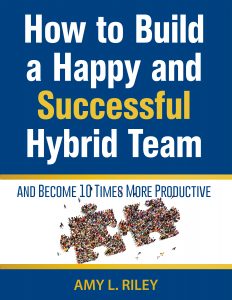
 A Summary of The Courage of a Leader® 4 Pillars
A Summary of The Courage of a Leader® 4 Pillars